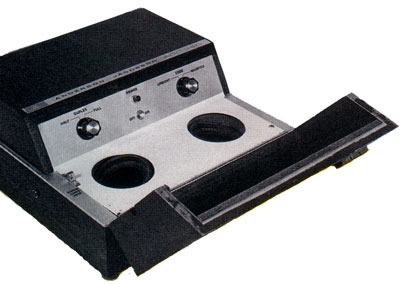
 |
Search | FAQ | US Titles | UK Titles | Memories | VaporWare | Digest | |||||||
| GuestBook | Classified | Chat | Products | Featured | Technical | Museum | ||||||||
| Downloads | Production | Fanfares | Music | Misc | Related | Contact | ||||||||
| CED in the History of Media Technology | ||||||||||||||

The acoustically coupled modem, which sends digital date over phone lines as audio pulses, was invented in the early 1960's, but it wasn't until John Van Geen at the Stanford Research Institute improved the device that it became available for general use. Phone companies at this time did not allow unapproved devices to be attached to phone lines, but Van Geen won approval for the modem by making it mimic the characteristics of an ordinary handset. He also greatly improved the ability of the modem to extract data bits from the background hiss of standard telephone connections. Until the 1980's acoustic modems operated by inserting a standard phone handset into the two soundproofed depressions on the modem chassis.
The acoustic modem set off the era of the so-called "dumb terminal" - a video display that could do nothing in and of itself unless hooked up to a remote computer via a modem. The era lasted until the late 1970's when computers became small enough for the display monitor to sit on top of the computer itself.